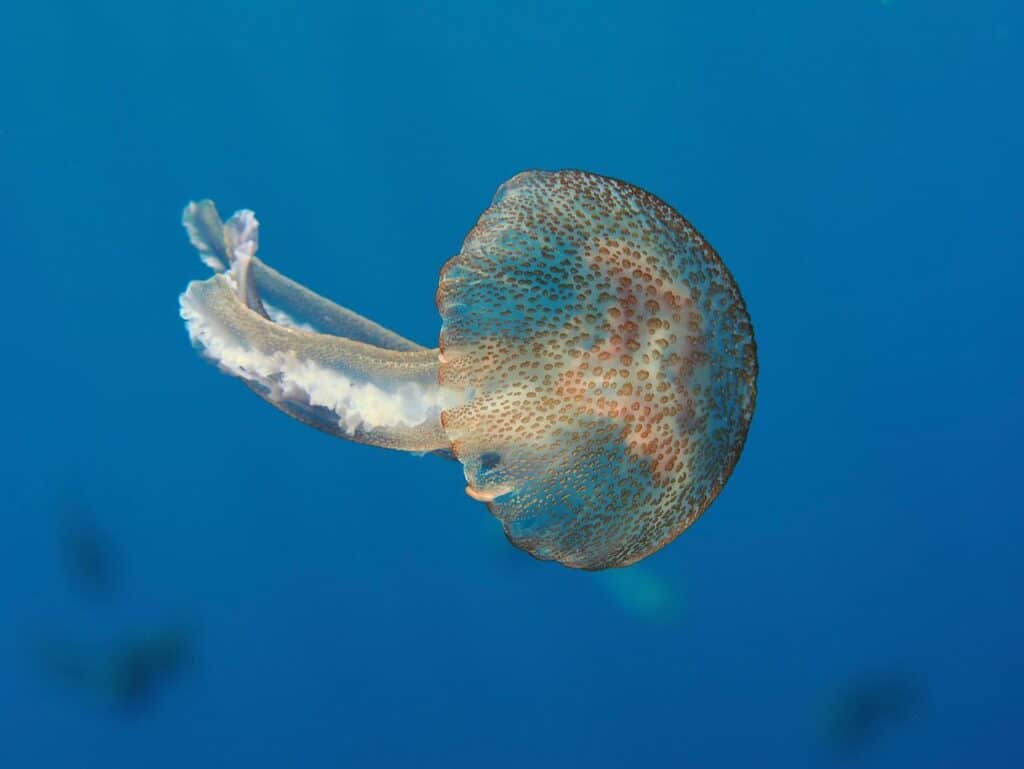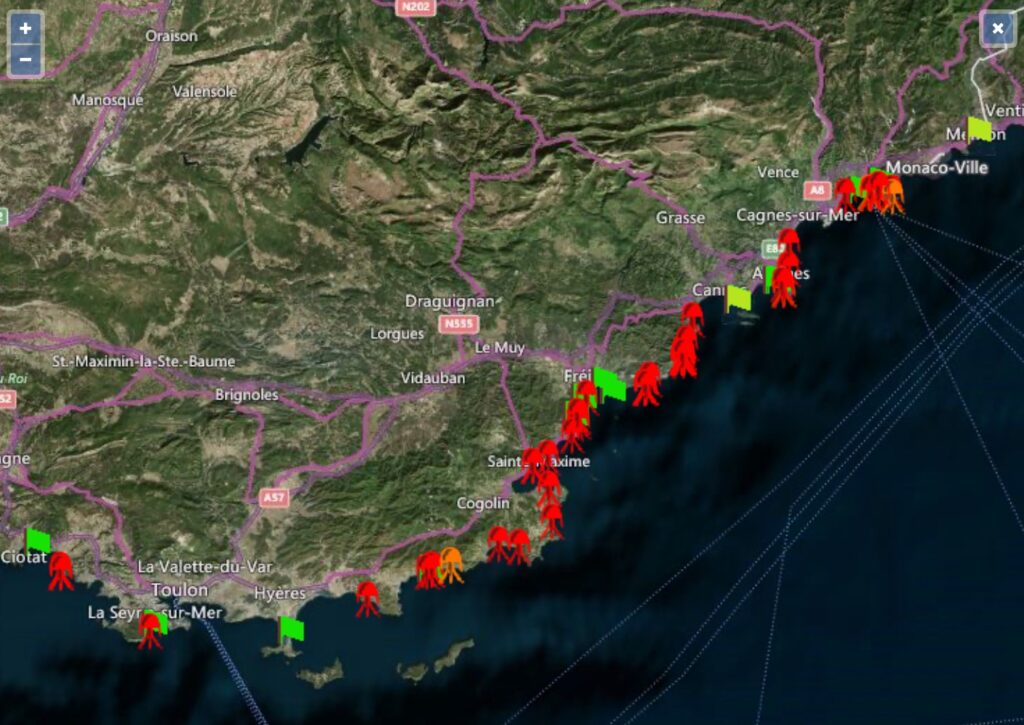Large numbers of jellyfish observed on Riviera beaches

At this time of year, it’s not uncommon to see jellyfish on the beaches of the Côte d’Azur, particularly the pelagic jellyfish, which is very common in the Mediterranean and whose sting causes itching and a burning sensation.
Every year, the ACRI laboratory at Sophia-Antipolis produces a real-time map with information on recent jellyfish sightings near the different beaches. It exists in smartphone app format, and bathers themselves help ensure it is regularly kept up to date. The creatures have reappeared on the shores of around fifteen beaches over the last 48 hours, from Villefranche-sur-mer to La Seyne-sur-Mer. None have been seen in Monaco in the last 24 hours.

Be careful when you’re in the water!
How do you treat a jellyfish sting?
Even if you’re careful, you could still be stung by a jellyfish. If so, there are three main ‘do’s’ to observe, as the Alpes-Maritimes fire service reminds us:
- Remove any tentacles that are left on the skin using tweezers, or by scraping wet sand over them.
- Rinse the wound with seawater, rather than shower water, which increases the pain.
- Disinfect with antiseptic
At the same time, here are a few ‘don’ts’ in the event of a sting:
- Do not apply alcohol
- Do not suck/pump out the venom
- Do not urinate on the wound, as this could cause infection
The biggest risk is allergic reactions. If you experience breathing difficulties, dizziness or vomiting, or if the person who has been stung faints, call the emergency services immediately on 15 (SAMU) or 18 (fire department).










